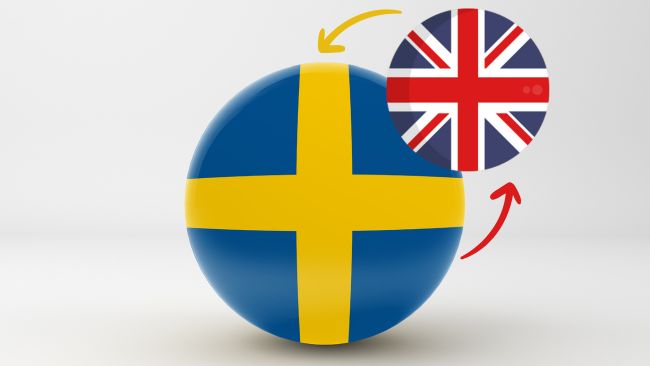Translation Challenges with English into Swedish Transcreation
Translation vs Transcreation: What is the Difference? And what are common challenges when translating from English to Swedish?
We, humans, have been translating texts for thousands of years. Transcreation, on the other hand, is a relatively new concept that was coined in the 1960s by the Indian poet, writer, and translator Purushottama Lal. Lal was perhaps best known for the translations of the epic Mahabharata and the Upanishads from Sanskrit into English.
In his essay On Translating Shakuntala, Lal argues that transcreation is more than just translating texts, it is also about adapting generally accepted values, cultural references, and expressions to which the text or texts are to be read. In order for the content to be understood by a modern readership, he also needed to adapt the texts accordingly.
This article will explore the difficulties of transcreation when translating from English to Swedish.
What is Transcreation?
Transcreation merges the terms “translation” and “creation” for copywriting content in a target language. It ensures the new language is clear, meaningful, and appropriate.
Transcreation is different from translation as it involves a cultural adaptation of the source text so that it resonates with the target audience in their language. It should be discussed with your client as it deviates from the mantra, “translate accurate to the source.” Not all content requires transcreation, a manual or scientific paper has no need for transcreation, but a marketing plan or other creative copy does. With transcreation, the translator is given the liberty to be creative, to look at the source concept and determine how this can be conveyed in the language of the target region and achieve the desired result.
How Cultural Differences Impact English-Swedish Transcreation
 When it comes to transcreation from English to Swedish, cultural differences can pose some serious challenges. Swedish transcreation requires a deep understanding of cultural nuances and sensitivities unique to Sweden.
When it comes to transcreation from English to Swedish, cultural differences can pose some serious challenges. Swedish transcreation requires a deep understanding of cultural nuances and sensitivities unique to Sweden.
Without this understanding, the transcreator runs the risk of producing content that falls flat or even offends the target audience.
English-Swedish transcreation is not just about translating words, it’s about capturing the essence of the source text and adapting it in a way that feels authentic and relevant to the Swedish audience. Well, a transcreated copy is perceived as having been written in Swedish from the start.
Here are some examples of different communication styles to keep in mind:
- Boasting is seen as unbecoming in Sweden, and modesty is valued. If a Swede claims to be good at something, it is likely that they are very proficient or have attained professional status in their field.
- Swedes often interact naturally, conveying their thoughts openly and directly in a polite tone. It helps if you get straight to the point, so you don’t waste their time.
Challenges with English-Swedish Transcreation
English-Swedish transcreation is a complex process. Here are some common mistakes and how to avoid them:
- Making a literal translation: A literal translation is not transcreation. Transcreation from English to Swedish should be done so that the original text’s message is maintained without sacrificing its impact. To ensure the translated content is effective, you may need to add idioms, tailor a few words and adjust figures of speech accordingly.
- Lack of creativity: Common mistakes made when creating an English-Swedish transcreation include a lack of creativity to depict a specific idea, motion, or storyline. This can result in text that is not only linguistically incorrect but also needs more emotion and connection for successful communication.
- Lack of knowledge of both languages: Professionals must be fluent in both language pairs when for a successful transcreation from English to Swedish. It is standard, that the translator is a native speaker of the target language and fluent in the source language. Another factor is where does the translator live? If not in Sweden, how frequently do they visit and how do they stay current with the language trends? This would be especially important for transcreation because if a translator does not stay current with the trends of their language, that term that was in fashion 10 years ago, may now be passé.
- Using too many difficult words: Using too many complex words and difficult sentences can make the translation confusing. In most cases, it will be better to use simpler words and sentences, but this also depends on the type of text.
- Not following the syntax or style: Another common pitfall is not adhering to the nuances of language, such as syntax or style. If a translation lacks the right stylistic approach it will appear unnatural, and the message will not get across effectively.
Best Practices for English-Swedish Transcreation
Professional English and Swedish transcreation is an important process for companies wishing to get their message across to a Swedish audience. It requires a deep understanding of both languages and the ability to create texts that resonate with the target audience. To ensure a successful English-Swedish transcreation, here are some best practices to follow:
- Research the target audience: It is vital to research the target market and understand cultural nuances to create a Swedish transcreation of an English copy effectively. This includes understanding how gender, age, and language impact how an audience will receive a message.
- When working with native Swedish translators, it is essential to provide them with copies of the source material that include instructions and guidelines for language choices, text length, format, etc.
English-Swedish Transcreation Services
Businesses can use a professional English-Swedish transcreation service to ensure that their message is conveyed accurately and effectively in Swedish. This will help them engage with their Swedish customers more meaningfully and build stronger relationships with them.
Globalization Partners International (GPI) has the right expertise to handle all of your transcreation needs. With years of experience in the Swedish-speaking market, we are the most reliable choice for your Swedish transcreation requirements.
Conclusion
Transcreation is a complex process that involves several challenges when translating English into Swedish, such as cultural differences and different communication styles between the two language pairs.
English-Swedish transcreation services are essential for businesses that want to reach Swedish customers. In this article, we have listed some potential transcreation challenges and some relevant tips for a successful English-Swedish transcreation to help businesses ensure that their message resonates with their target audience.
